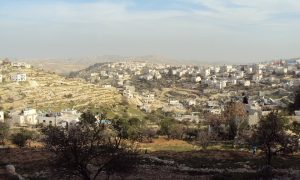Qatar has promised the largest aid package among donors gathered in Cairo to raise funds for reconstruction in the Gaza Strip.
France 24 has reported that: “The state of Qatar announces its participation with an amount of $1 billion for the reconstruction of Gaza,” Qatari Foreign Minister Khaled al-Attiya told a conference in the Egyptian capital, attended by representatives from dozens of countries and international organisations.
The $4 billion in aid sought from participants were exceeded as intended donations totalled $5.4 billion, Norway’s foreign minister said Sunday evening. European Union member states have made a combined pledge for €450 million ($570 million) and US Secretary of State John Kerry announced $212 million in new aid from the United States. Turkey, the United Arab Emirates and Kuwait promised $200 million each.
Prior to the meeting, it was unclear how generous donors would be, given the lack of progress toward resolving the broader Israeli-Palestinian conflict and the risk that hostilities could erupt again, destroying whatever has been rebuilt. The US Secretary of State dismissed such concerns, stressing the urgent need to begin rebuilding in the Palestinian enclave. Read more: http://www.france24.com/en/20141012-gaza-aid-talks-cairo-usa-kerry/
While the mission of the United Nations Office for the Coordination of Humanitarian Affairs (OCHA) has published earlier the following report about the losses in the Gaza Strip:
“The majority of the Gaza population has lost its productive assets. According to the Palestinian Federation of Industries, 419 businesses and workshops were damaged, with 128 completely destroyed. With limited activity at the commercial crossings and extensive damage to private infrastructure and other productive assets, business activities were largely paralyzed during the operation. Hostilities forced farmers and herders to abandon their lands, and resulted in substantial direct damage to Gaza’s 17,000 hectares of croplands as well as much of its agricultural infrastructure, including greenhouses, irrigation systems, animal farms, fodder stocks and fishing boats. Access to the sea was also prohibited for most of the 50 days of hostilities; restrictions have been restored to the six nautical mile limit, but there have been reports of shooting at, and detaining, fishermen in recent days, reportedly for exceeding this limit. These losses come on top of an already fragile economy and livelihoods. Around 66 per cent of the population of Gaza was receiving food assistance prior to the crisis and the household food insecurity level or vulnerable to food insecure stood at 72 per cent of households. Unemployment has increased dramatically since mid-2013, following a halt of the illegal tunnel trade with Egypt, soaring from 28 per cent in the third quarter (Q3) of 2013 to 45 per cent in Q2 2014; almost 70 per cent of the youth aged 20-24 were unemployed in Gaza in Q2 2014. It is expected that labour market conditions in Gaza will further deteriorate following the conflict, exacerbating the impact of the blockade and the longstanding access restrictions imposed by Israel which have been preventing any meaningful economic activity.
The water and wastewater situation in Gaza was already critical before the emergency, due to continued over-pumping and contamination of the coastal aquifer, and continual electricity and fuel shortages. Water and wastewater services were further hampered during the war, due to aggravations of electricity and fuel shortages and the inaccessibility of many wells, pumping stations, and other facilities within the Israeli declared buffer zone. Despite the improved access to these areas following the cessation of hostilities, services remain affected due to the damage sustained to some facilities, including the Gaza Power Plant (GPP).” To read the full report http://www.ochaopt.org/documents/ocha_opt_sitrep_04_09_2014.pdf

























